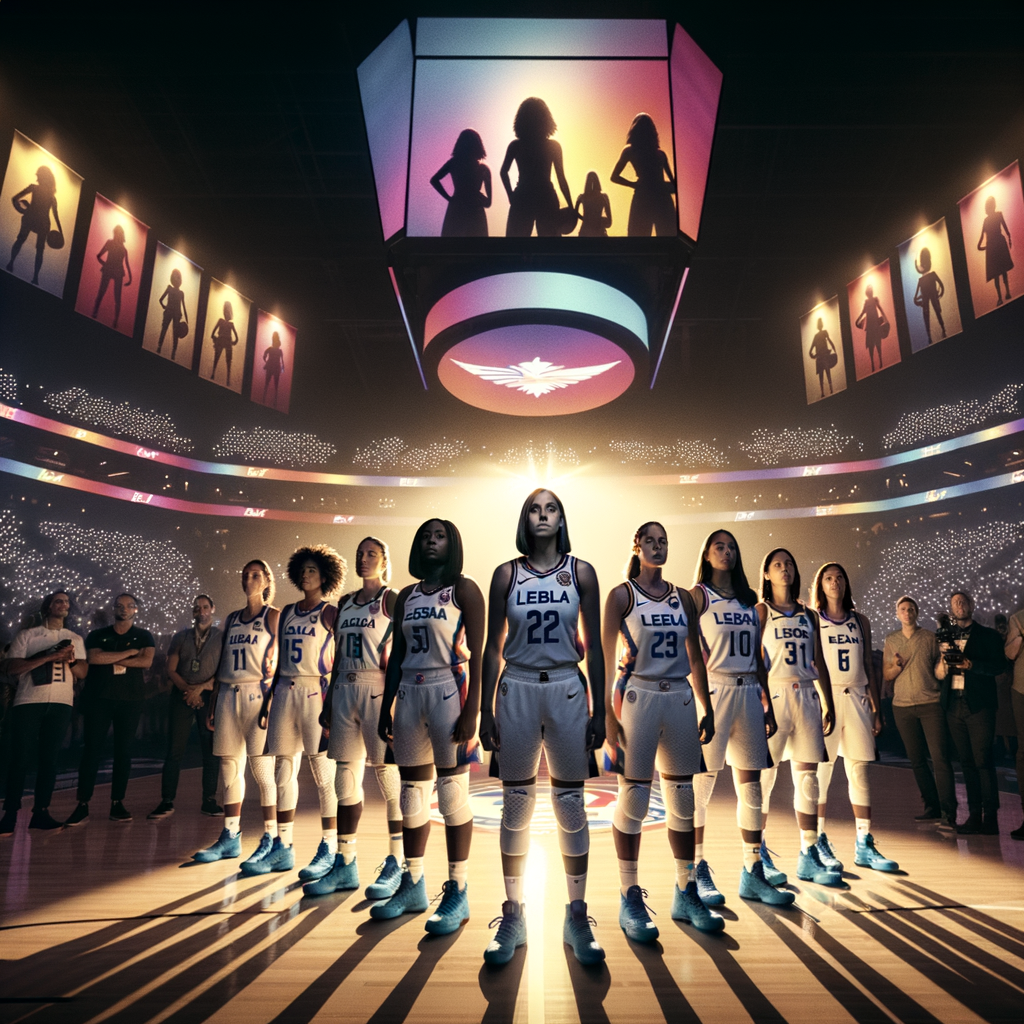WNBA All-Stars Got Down to Business: “Pay Us What You Owe Us”
During warmups at the 2024 WNBA All-Star Game, players wore bold statement shirts with a clear message: “Pay Us What You Owe Us.” This visual protest was more than a fashion statement—it was a unified call for equity in compensation, resources, and recognition. As the athletes showcased their elite talent on the court, they were also calling on league officials, sponsors, and fans to reevaluate how women’s professional sports are treated in today’s evolving sports economy.
The Message Behind the Shirts
Historical Pay Disparity in Women’s Sports
Compensation inequity in sports, particularly between male and female athletes, has long been criticized. While the NBA generates considerably more revenue and media coverage, the WNBA’s growth, attendance, and ratings have steadily increased year over year. Despite this, players in the WNBA face drastically lower salary caps and earnings compared to their male counterparts. The minimum salaries in the NBA are significantly higher than the maximum salaries in the WNBA—a disparity that has sparked consistent advocacy.
“Pay Us What You Owe Us”: A Direct Statement
By wearing shirts with the phrase “Pay Us What You Owe Us,” WNBA All-Stars made a calculated decision to champion collective bargaining rights, fair compensation, and acknowledgment of the business they generate. This wasn’t simply about equal pay, but about honoring contracts, investing in the infrastructure of women’s sports, and recognizing the broader economic value these athletes create both on and off the court.
The Collective Bargaining Agreement (CBA) and Its Limitations
Progress Achieved
To the league’s credit, the 2020 restructured CBA between the WNBA and its Players Association was seen as a benchmark deal. It increased salaries, improved travel accommodations, and introduced maternity benefits. The agreement was initially celebrated as a leap forward in professional women’s sports labor contracts.
Room for Growth
While the 2020 CBA marked progress, players argue that current compensation still doesn’t match their production value. Moreover, restrictions such as a hard salary cap often force teams into difficult trade-offs, discouraging long-term player retention and weakening team-building flexibility. The protest shirts were a public reminder that despite marginal improvements, there is still work to be done.
WNBA as a Business: The Economic Argument
Revenue Sharing and Sponsorships
One of the key demands behind the protest is a more equitable revenue-sharing model. As the WNBA gains more sponsorship deals, television contracts (such as those with ESPN), and global media exposure, players believe it’s reasonable to expect a proportional share of the growing pie. In other pro sports leagues, players often receive near 50% of revenue. In contrast, WNBA players reportedly receive a far smaller percentage—a compelling argument fueling their collective demand.
Investing in Growth-Driven Initiatives
Many experts believe that further investment, rather than cost control, is the key to advancing the WNBA’s commercial viability. For instance, enhancing marketing and player visibility, securing better broadcast slots, and funding youth and community development programs can organically grow the fan base—resulting in higher ticket sales and brand engagement. Several WNBA athletes have already proven to be effective brand ambassadors, social justice advocates, and community leaders.
The Role of Institutions and Stakeholders
Corporate and Governmental Implications
There’s also an opportunity here for state and federal agencies, particularly in the realm of public-private partnerships (P3s), to show support for equity in professional sports. Agencies could engage in community initiatives, fund infrastructure projects benefiting women’s leagues, or even mandate inclusive sponsorship requirements in partnership solicitations.
Private and nonprofit sector sponsors also play a crucial role in amplifying the WNBA’s reach. By acknowledging the market’s untapped potential and responding to equity-based appeals, corporate backers can be part of a transformative moment in women’s sports.
Media’s Responsibility
Another key stakeholder is the media. Global streaming platforms and 24/7 sports networks have the power to elevate narratives beyond singular game highlights. Media representation has a direct impact on visibility, endorsement potential, and valuation of athletes—key components in closing the pay and equity gap.
Conclusion: More Than a Game
The WNBA All-Star Game in 2024 was memorable not just for jaw-dropping athleticism but for its unapologetic call for fairness and respect. The message, “Pay Us What You Owe Us,” wasn’t about entitlement—it was about earned equity. As the sports landscape evolves, it is crucial that athletes, especially in women’s professional leagues, are compensated in alignment with the value they bring to the game, commerce, and culture

